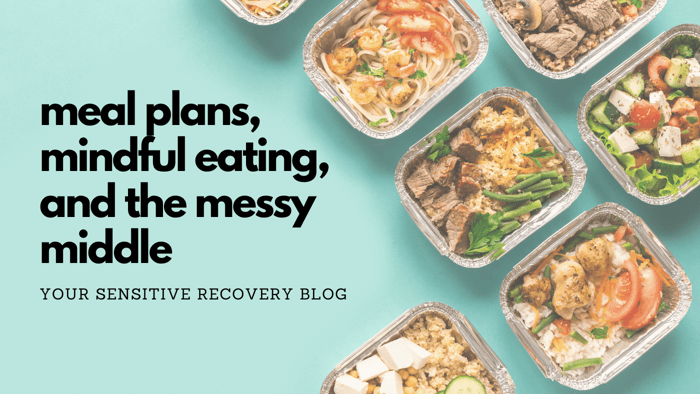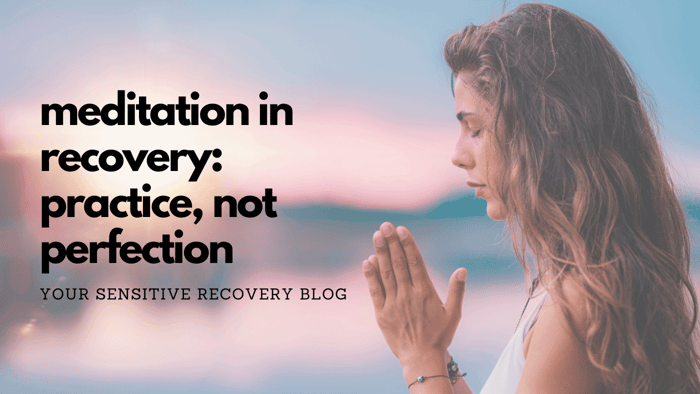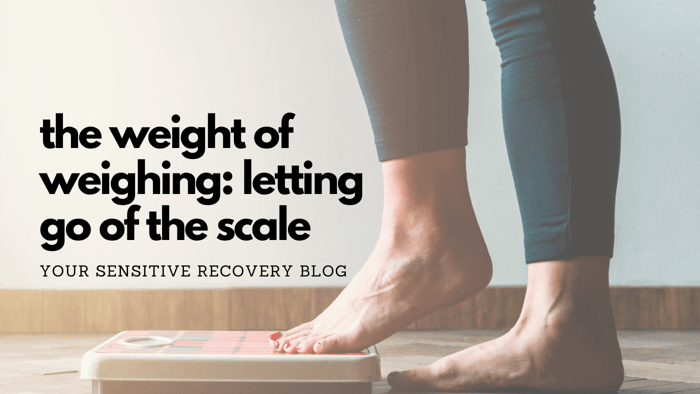If you've ever sought help for an eating disorder or disordered eating, you may have encountered a little thing called a meal plan. Honestly, they're big tools, and they're extremely common in most treatment settings, from outpatient sessions with a dietitian to more intensive treatment programs. The structure of a meal plan can feel both stabilizing and stifling. And yet, they can play an essential role in early healing.
On the other end of the spectrum is a more mindful, conscious form of eating guided by our intuition and connection with our body. This "intuitive eating" is beautiful in theory but can be very overwhelming in practice, especially after months (or years) of relying on external rules, cues, and routines.
So, how do you transition from one phase of healing to the other?
Welcome to the messy middle, friend. 😉
Why Meal Plans Matter
In early recovery, your mind isn't always in the best place to reliably interpret your body's natural hunger and fullness cues. Difficult emotions that may have been kept at bay by disordered eating are starting to surface, and critical thoughts about food and your worth are paralyzingly loud. For times like this, a structured meal plan can be particularly helpful for reestablishing rhythm and consistency in your nourishment, taking the guesswork out of eating, and giving you a foundation to heal physically and emotionally.
This is especially helpful for Highly Sensitive individuals who are easily overwhelmed by too many choices or decisions. Analysis paralysis in recovery can be a beast!
A meal plan can offer clarity and predictability, both of which can be calming to a sensitive nervous system.But meal plans aren’t meant to be forever, and if they feel more like a prison than supportive scaffolding, then they might not be the best fit for you.
What Mindful Eating Actually Means
Mindful or intuitive eating gets a lot of buzz, but it’s not always fully understood. It’s not about eating only when you’re hungry and always stopping as soon as you notice fullness. It’s about tuning IN - not just to your sensations, but to your emotions, your thoughts, your environment, and your needs.
This kind of attunement can be a huge strength in your recovery once you’ve had enough time and support to reconnect with your internal cues.
But going straight from a rigid plan to total freedom? Now, that’s a recipe for anxiety, and oftentimes disappointment and frustration. That's where the messy middle comes in.
Tips for Navigating the Transition
If you’re in that in-between space, where you're needing more flexibility and freedom but are unsure how to trust yourself again, here are some gentle suggestions:
1. Test out your portioning skills.
This tip is particularly helpful if you've been measuring your food per your meal plan. (If this hasn't been a thing for you, feel free to skip it, although it can be interesting to see how you do.) Try "reverse portioning," where you do your best to eyeball a portion (a cup of rice, say) and then place it into a measuring cup to see how well you did with your estimation. If you're way off, give yourself permission to practice until it becomes easier to gauge what you're going for.
2. Instead of ditching structure, layer in flexibility slowly.
You don’t have to give up structure entirely; in fact, most peaceful, balanced eaters have flexible structure. Let yours evolve. Maybe breakfast and lunch stay predictable while dinner gets a little more intuitive. Maybe you plan your snacks, but let your meals be more responsive. You might even start by choosing one meal or snack a day where you explore a bit of freedom. Maybe that’s honoring a craving, or letting hunger guide you rather than the clock. For example, if you notice you aren't hungry for your usual snack, pay attention to how skipping it affects your next meal. Do you feel uncomfortably hungry? More anxious? Do you notice a moment of sneaky eating-disorder-joy about "getting away" with something? This is all helpful information.
3. Try an awareness-tracking tool.
The app Peace With Food is unlike most other food-related apps. You're not asked a ton of questions, or even to log what you ate at all. It's simply a tool for checking in with your hunger/fullness in the moment, helping you build awareness and look for patterns over time. This app can be particularly great if you are used to logging your meals and snacks (no, not for calorie counting - those suck) and are ready to change that part of your recovery.
4. Practice curiosity over judgment.
Perhaps the most important thing you can do for yourself when transitioning to a more intuition-based approach to food is to adopt a curious, judgment-free stance. When things feel messy, ask yourself, "What am I learning about myself right now?" The struggles you have during this time are not failures. They’re information. Know that it’s normal to feel a little wobbly. The messy middle is... well, messy. You might swing between wanting full freedom and craving structure. That’s part of the process, not a sign you’re doing it wrong.
5. Use your sensitivity as a guide.
Guess what, HSP! You’re wired to notice the subtleties. You can use this characteristic to your advantage when you tune in (without judgment, of course) to how different foods, routines, or rhythms make you feel physically, mentally, and emotionally.
Making Peace with Food (and Yourself)
Healing your relationship with food isn’t about being 100% structured or 100% easy-breeze- mindful. It’s about learning to hold both. Structure can support you. Intuition can guide you. Flexibility allows both to coexist.
In that space, food becomes less of a battleground and more of a bridge: to connection, to care, to being fully, and gently alive in your body.
✌️
✨ Josie Munroe, LMFT is a licensed therapist and owner of JosieMunroe.com and Your Sensitive Recovery. As a recovered clinician and Highly Sensitive Person, she loves supporting others on their journeys to form new, empowered relationships with food, their bodies, and their sensitivity. Join the newsletter for a weekly boost of hope and inspiration. You deserve a recovery that works for you! ✨




